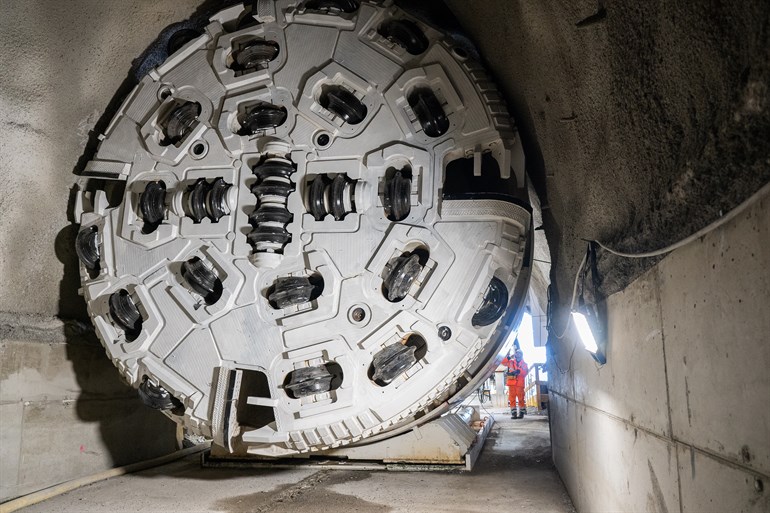
Anneberg-Skanstull i brittisk branschmedia
Senaste numret av branschtidningen ”International Tunnels and Tunnelling Journal” innehåller en artikel om projekt Anneberg-Skanstull. Tidningen är den brittiska tunnelbranschens kanske viktigaste, ”the official magazine of the British Tunnelling Society”, Artikeln är skriven av teknikjournalisten Patrick Reynolds och är på engelska.
Stockholm Power Cables
TBM boring has been underway for some months on the Anneberg-Skanstull project, where Svenska kraftnät is adding a further cable tunnel to the electricity grid serving Stockholm. Contractor Hochtief-Implenia JV is using a 5.03m-diameter Herrenknecht main beam gripper to bore the 13.4km-long tunnel, driving at depths of 50m–100m below the ground surface. The project is the first time grid company Svenska kraftnät has had a cable tunnel constructed by TBM.
Geology along the route comprises greywacke, granite and gneiss. The route is hilly along parts of the alignment, from Anneberg in the north end of Stockholm toward Skanstull, near the centre of the capital, crossing sea inlets on the way where the tunnel is at least 30m below the sea bed. Located in an archipelago, the coastal city is known by many locals as the ‘Venice of the North.’ The water table is generally close to the surface and so the deep new tunnel is entirely below groundwater level. The city has environmental laws to limit changes to groundwater levels and the ingress limits vary along the tunnel route. If needed during the lifetime of the tunnel, groundwater replenishment will be undertaken.
Given the hydrogeological conditions, pre-grouting work was planned from the outset to limit seepage. The TBM was fitted out with grouting equipment and would stop every 15m for the task. No continuous lining was planned, only spot- or pattern-bolting with shotcrete, as required. TBM excavation began in February 2020, slightly ahead of schedule.
- Driving south from the Anneberg substation, the hard rock shield has advanced approximately 1.4km, Svenska kraftnät project manager Rolf Aarflot tells T&T.
He says that rock quality ‘is according to expectations’ and ‘weakness zones are monitored to adapt the works and grouting accordingly,’ but more pregrouting has been required than expected, and in more spots, along the advance so far. Tunnelling on the project also has a number of further challenges, such as the ongoing logistical complications arising from noise restrictions. This limits the number of hours the TBM can operate, and consequently impacts pre-grouting activities as well as post grouting to meet leakage limits.
- These challenges are carefully monitored and handled to ensure high quality,” Aarflot adds.
In relation to this, SVK monitors groundwater levels along the route before, during and after the TBM has passed. Additionally, and like so many construction projects internationally, the Anneberg-Skanstull project is affected on an ongoing basis by the extra safety management needs of personnel, as well as the social distancing requirements of the pandemic, which had to be implemented soon after the start of tunnelling. A further challenge, early on, required some maintenance work on the TBM.
- Covid has been a challenge for us all and even more so for the members of staff working in the tunnel, says Aarflot. The work has been strictly regulated and monitored by us and our contractor to avoid spreading the virus. The work in the tunnel has been affected but never completely shut down. The combination of challenges has meant that overall, tunnelling progress has been slower than expected, Aarflot tells T&T, and adds there is a margin for unexpected events. Anneberg-Skanstull tunnel will have six shafts along the route for future use to perform maintenance as well as provide ventilation to manage heat from electrical cables, to be installed after the tunnel is completed.
The first shaft to be excavated will be at Stadsgårdskajen, in the south section of the route, and preparations are underway. Four shafts are to be constructed by raise boring (4m diameter) and two by conventional sinking.